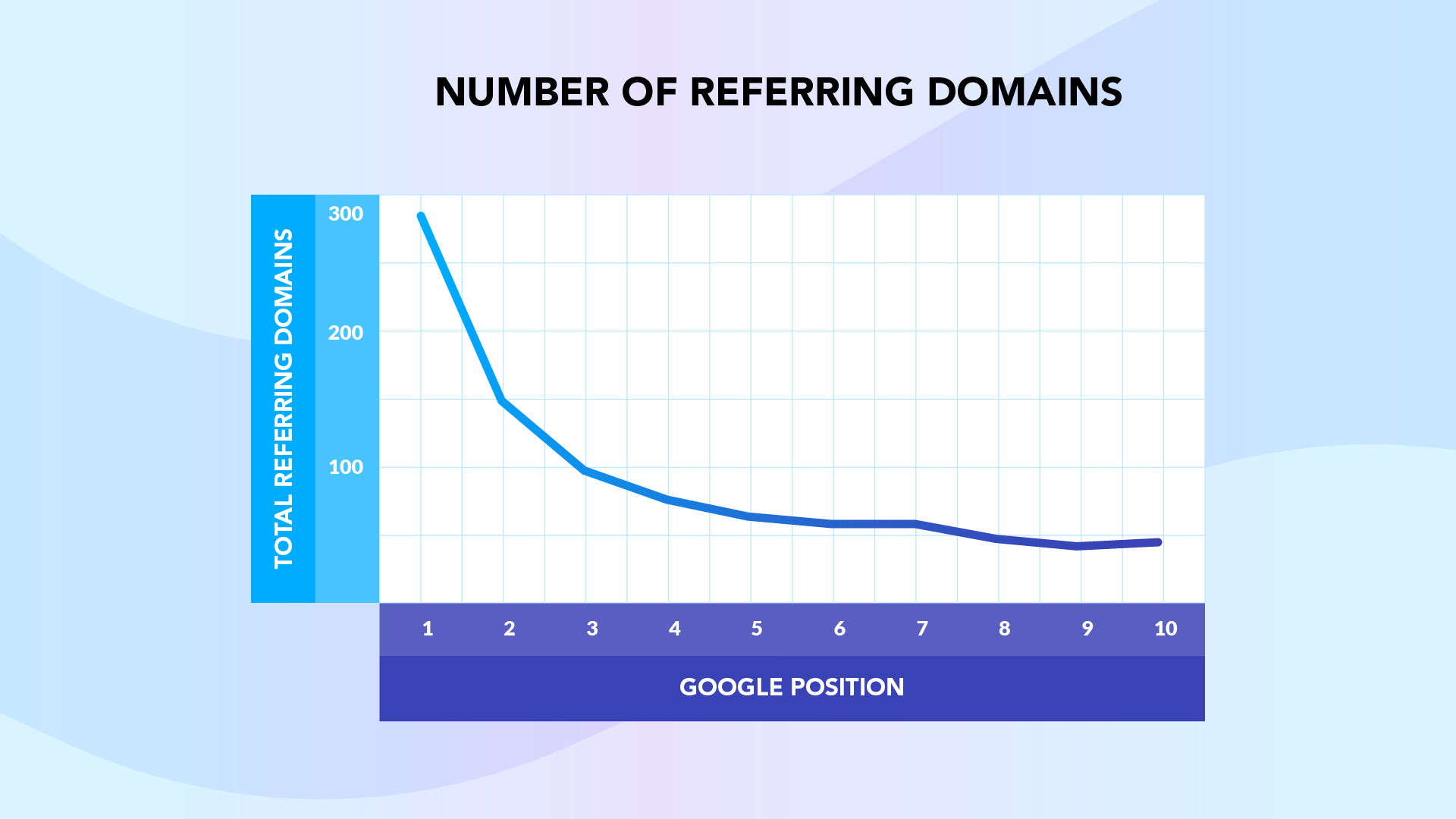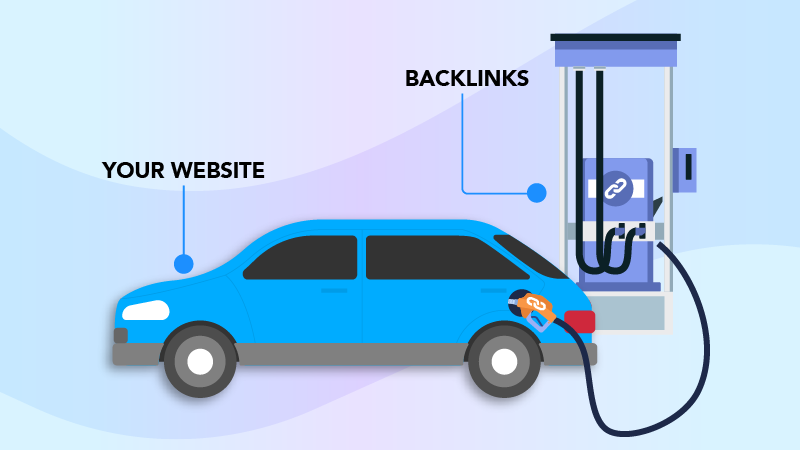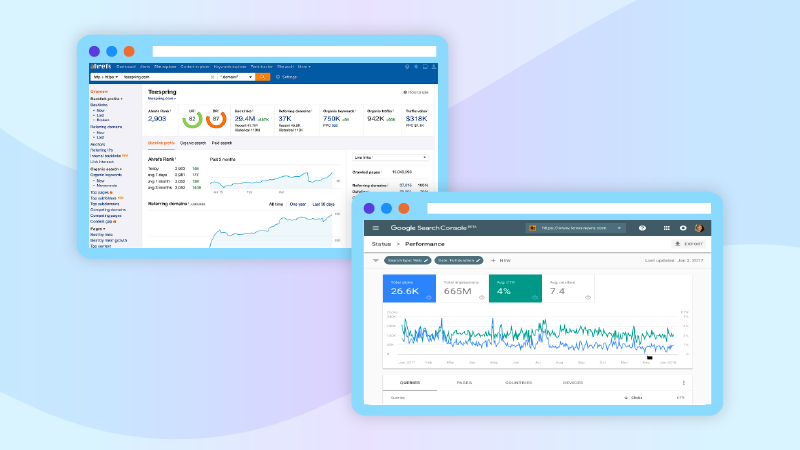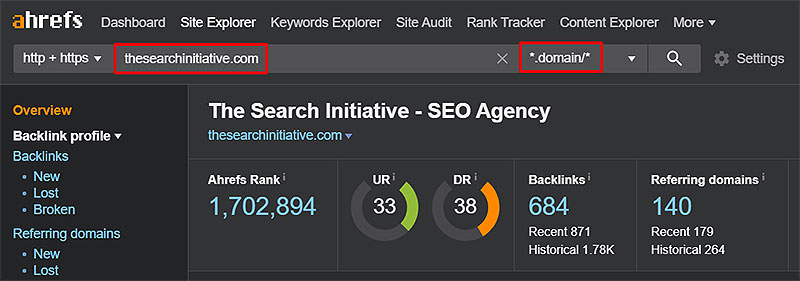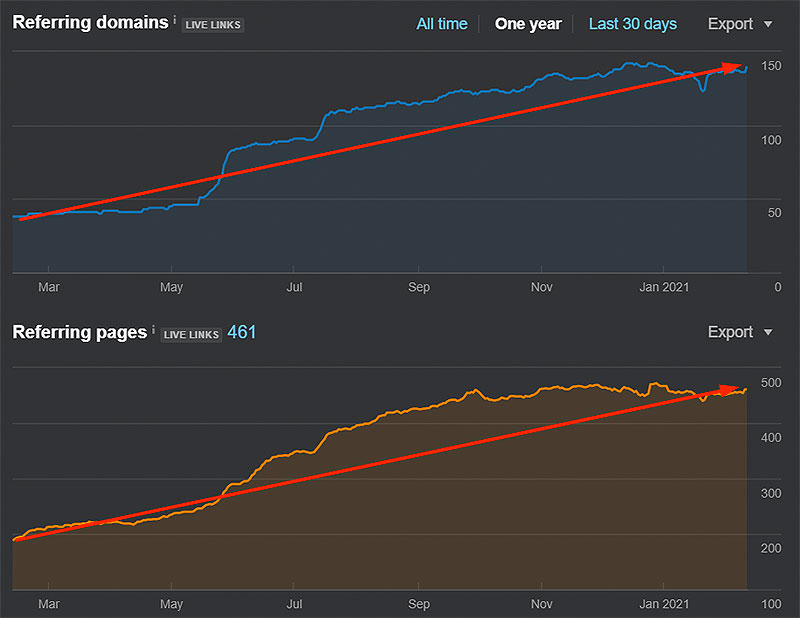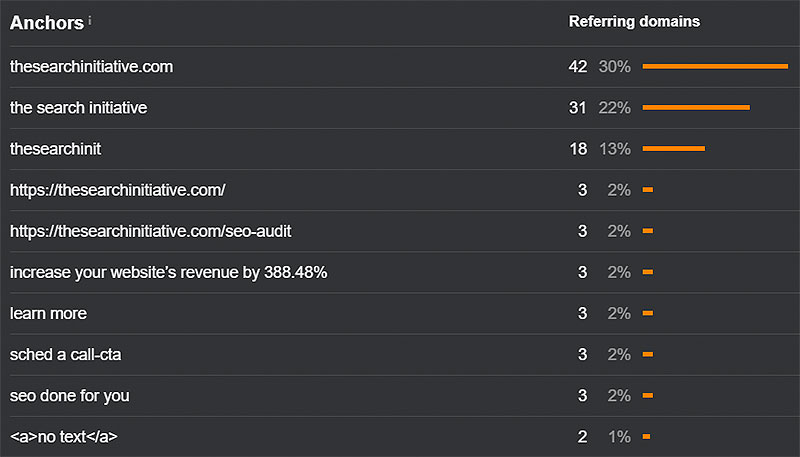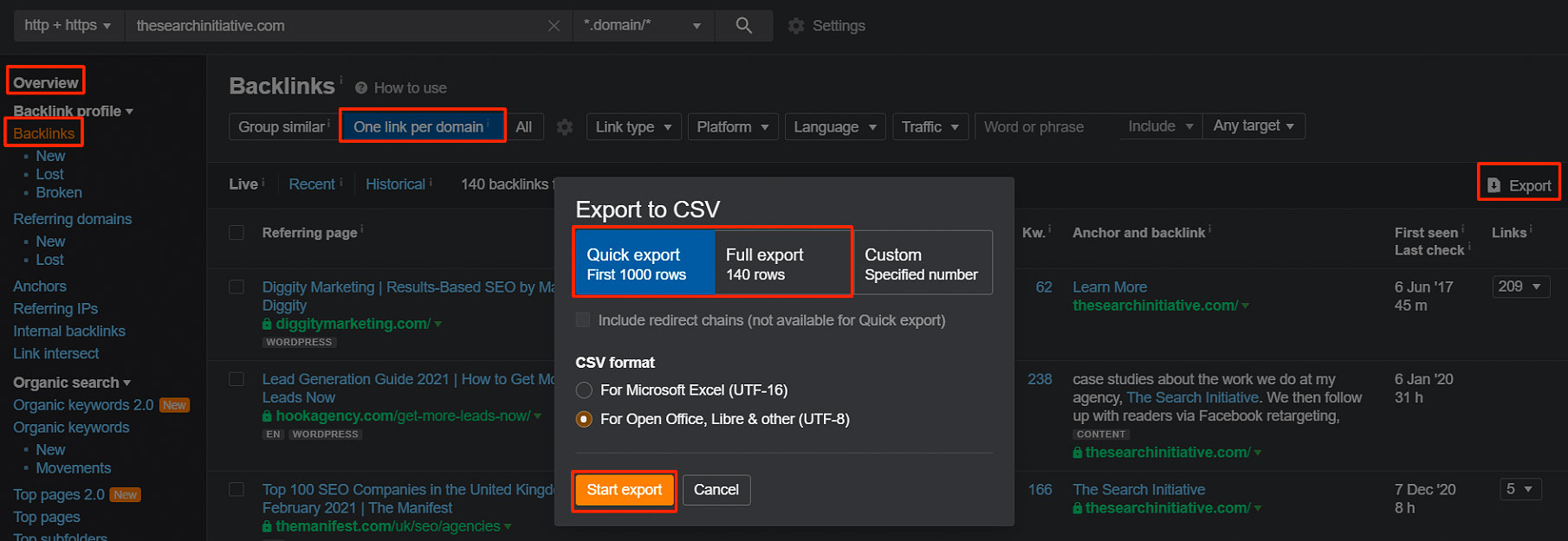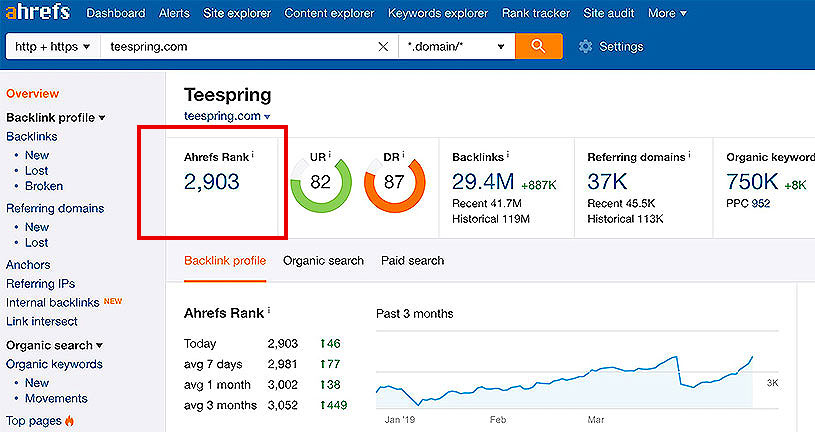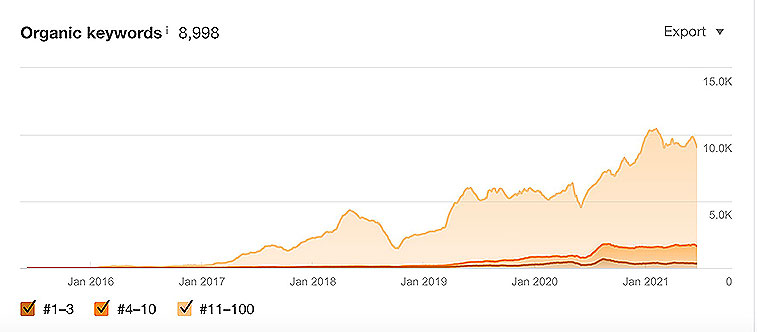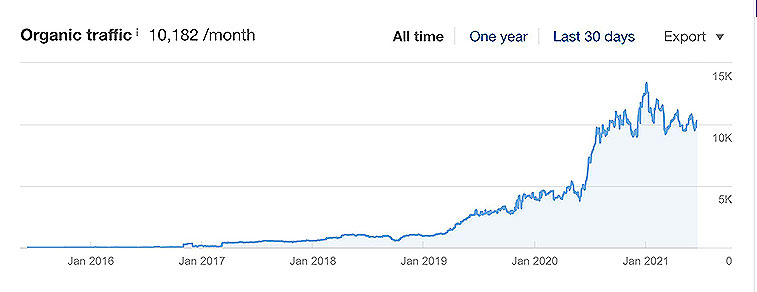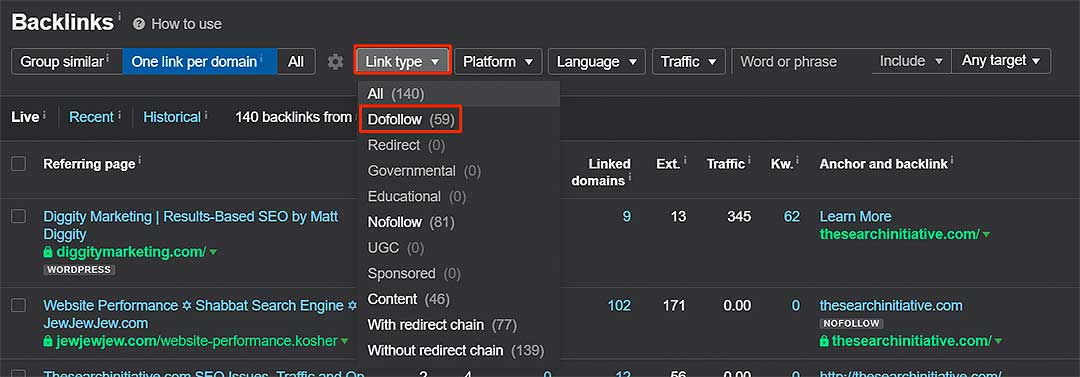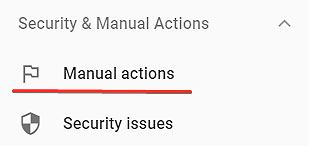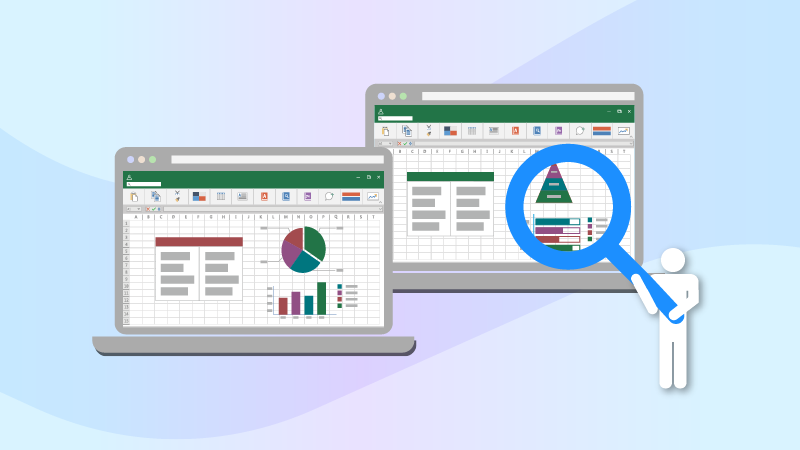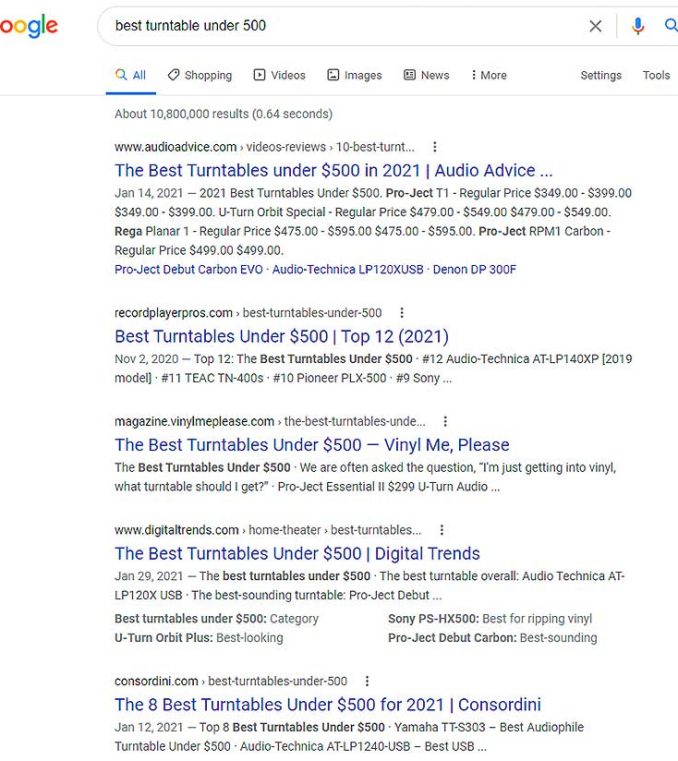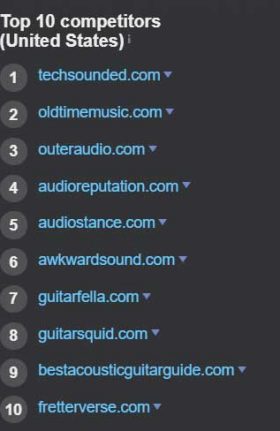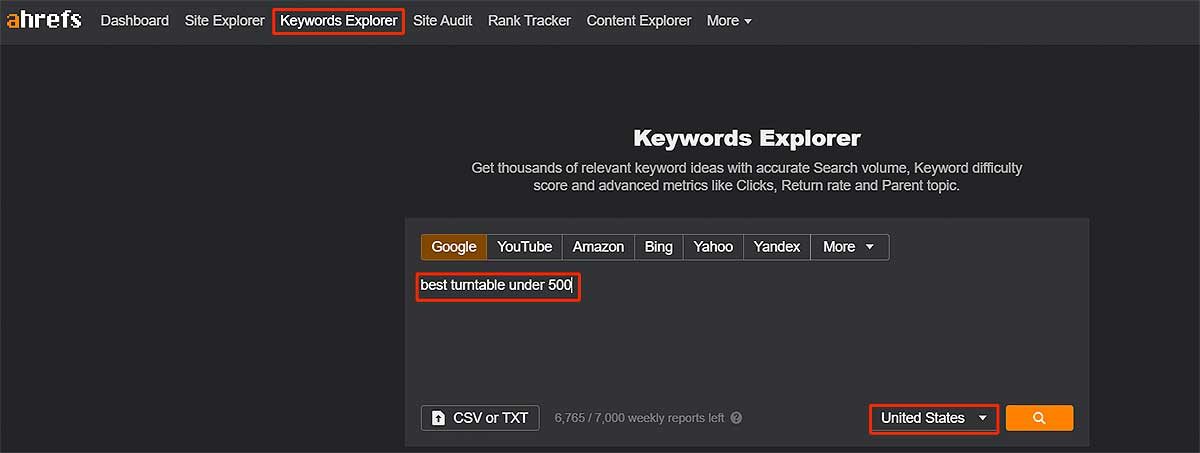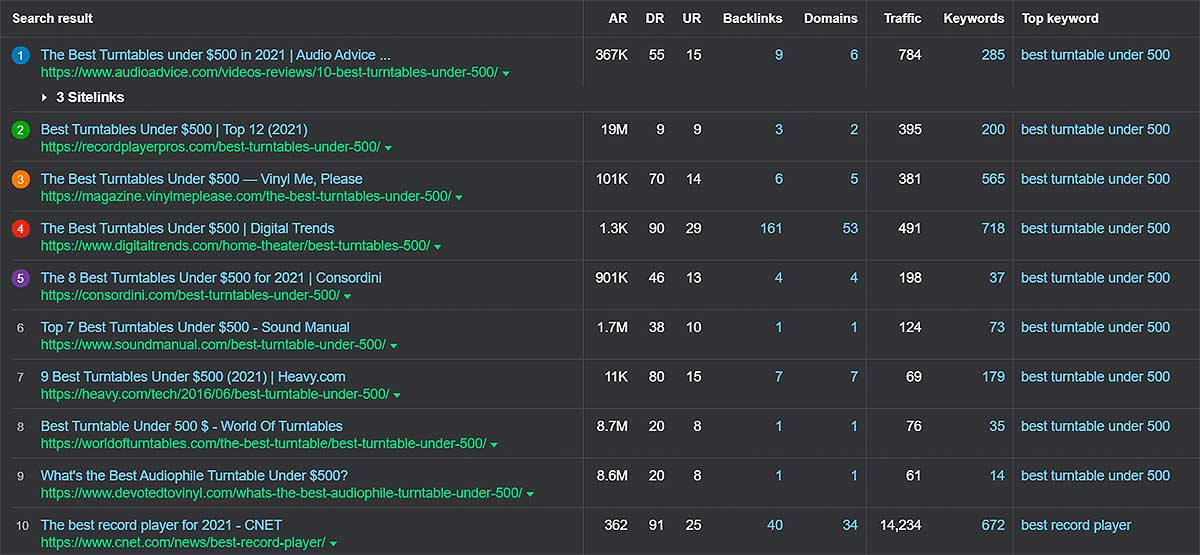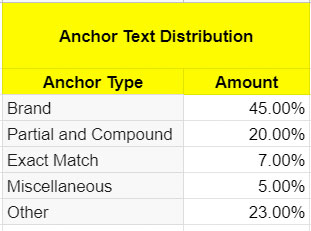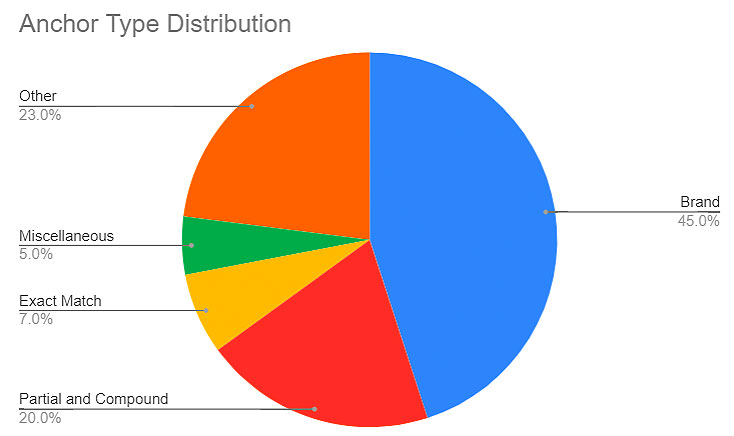If you want to know whether your website is in good SEO shape or not, you need to check your backlinks.
I’ve been doing SEO since 2009. I have played around with both white hat and black hat SEO techniques, and I can tell you from my own experience that your backlink profile health can make or break your SEO efforts..
That’s why a backlink audit is crucial for your website’s search engine ranking.
In this article, I’ll show you exactly how to do a backlink audit using Ahrefs backlink audit tool. I personally found this tool to be the most helpful.
You’ll also learn how to analyze such links on your backlink profile so that you can identify any bad backlinks to your site that may prevent it from ranking to its potential.
Once you’ve done a complete link audit, the next step is to continue to build websites link acquisition authority. Therefore, in the final chapter, you’ll find out how to create a Link Requirement Estimate Plan for your site – it’s a report that looks at how many backlinks/referring domains you’ll need to outrank your competitors.
Table Of Contents
Quick Summary
A backlink audit is a comprehensive analysis of the quality and relevance of the links pointing to your website. This process is crucial to ensure that there are no spammy or unnatural backlinks that could negatively impact your site’s SEO performance or lead to a Google Manual Penalty.
The backlink audit process involves using tools like Ahrefs to gather data about your backlink profile, analyzing the backlinks based on various metrics such as Domain Authority, Page Authority, anchor text, and link relevance, and identifying potentially harmful links.
After conducting a backlink audit, it’s important to create a Link Requirement Estimate Plan. This plan outlines how many and what types of backlinks you’ll need to build to compete with your competitors, providing a roadmap for your future link-building strategy.
What is a Backlink Audit?
A backlink audit is all about analyzing the quality of links towards your website from other domains with the aim to make sure that there aren’t any unnatural or spammy backlinks that could potentially hinder your site’s SEO performance or result in a Google Manual Penalty.
Why is a Backlink Audit Important?
A backlink audit is important because links are one of the most powerful and important ranking factors in Google’s Search algorithms. There’s no denying the importance of links and, by extension, the art of link building has on your website’s ability to rank.
A Backlinko study of one million search results found that backlinks correlated with search engine rankings more than any other ranking factor.
With this in mind, it’s no surprise that links can also be one of the most problematic components of your site’s SEO health.
When you buy a car, you have to put the right fuel in it to make it run. In the same way, backlinks are like a website’s fuel where the right links provide the boost it needs to move forwards (rank).
Apart from helping you find the potentially dangerous links, performing a link audit also helps provide an insight into your backlink profile and how you may want to strategize for a future link-building campaign.
This is something that ties into the Link Requirement Plan section of this article.
Backlink Audit Checklist
Before we begin, here’s a breakdown of every backlink audit tool you’ll need to identify potentially dangerous backlinks to your site.
Ahrefs – A great backlink audit tool for reviewing and analyzing your backlinks.
Google Search Console – Formerly known as Google Webmaster Tools, Google Search Console has a “download latest links” report that allows you to download a sample of your backlinks and is also the place where you will check for link-based manual penalties.
Get An Overview of Your Link Profile (And Your Competitors)
The first step in this link profile audit process is all about getting to know the state of your site’s link profile before digging deep into the links themselves.
How many backlinks does my website currently have?
How many domains are currently linking to my website?
How much “authority” does my website have?
How frequently is my site gaining (or losing) links?
What are the most common anchor texts being used to link to my website?
Is the anchor text distribution natural?
How do these compare to my competitors?
Has my site been hit by a negative SEO attack?
Can I identify negative SEO attacks?
The simplest way to do this is via Ahrefs’ Site Explorer tool.
Site Explorer > Enter your domain > Choose the “*.domain/*” mode
Scroll a little further down, and you’ll see two graphs which show the number of referring domains (i.e. domains linking) and referring pages your website has seen over time.
This graph is useful because it shows any sharp increases (which may be a result of a negative SEO attack), or decreases (which may represent a sudden loss of links) that may be of importance.
You can compare both the referring domains and the link velocity graph with your competitors.
To find out more about link velocity, check out the video below.
Scroll further down, and you’ll find a table that shows the most common anchor texts used to link to your website.
With this table, you can quickly identify whether the anchor text distribution of your link profile is natural or not.
If you see mostly branded, URL based anchor texts, you have little to worry about.
If you spot any anchors that are spammy (i.e. they have nothing to do with your website), or over-optimized (i.e. they are mostly keyword-rich), then this indicated that you will likely need to dig a little deeper by scrutinizing the full anchor text report that Ahrefs provides. You can do this by clicking on “view full report”.
The TSI website has 684 backlinks.
The TSI website has links from 140 domains.
The TSI website has a Domain Rating (Domain Authority) of 38.
The TSI website has seen relatively steady growth in referring domains and referring pages over the past year.
The most common anchors used to link to the TSI website are branded and URL based like “thesearchinitiative.com” and “the search initiative”.
The TSI anchor text distribution is natural because the majority of the anchors used are branded and URL based as opposed to targeted, keyword-rich anchors like “seo agency”.
This information will come in handy later on!
Follow the above steps to get an overview of your competitor’s backlink profile too – this will help you see where your website stands in comparison.
Find & Pool Your Backlinks
To perform your backlink audit, you need to gather data first!
To get the most comprehensive data on your link profile, we recommend using as many sources as possible, but the main source we will use here is Ahrefs.
To grab your backlink data head over to:
Overview > Backlinks > One link per domain > Export > Quick/Full Export > Start Export
From the export, delete all columns except:
Total Backlinks (optional)
Referring Page URL
URL Rating (desc)
Domain Rating
Link Anchor
Type
Language
Traffic
Keywords
Now that you’ve collected all the information you need about your backlink profile, it’s time to analyze the actual backlinks!
Analyze Your Backlinks
Below we have listed a few metrics that you should look to speed up the process of analyzing all your backlinks.
Each of these will help you answer the question, is this a spammy backlink?
Domain Authority
Your website’s Domain Authority is the perceived amount of authority your site has based on the quality and quantity of your backlinks.
A link from a website with a high authority indicates that the link is of higher “quality”.
Ahrefs has a logarithmic scale for Domain Authority called Domain Rating, in general:
DR 50+: indicates that the link is from a very authoritative domain and is of high quality.
DR 21-49: indicates that the link is from an authoritative domain and is of good quality.
DR 11-20: indicates that the links are from a good domain and are of relatively good quality but should be scrutinized a little further to determine whether it is harmful or not.
DR 0-10: indicates that the link is likely not from an authoritative domain and is of poor quality offering little SEO value to your website. This link should be scrutinized the most to ensure whether or not it is harmful.
It’s worth noting that not all domains with a low DR score are spam sites. In these cases, other factors such as the language, number of keywords, link relevance should be considered.
Page Authority
Page Authority (or Ahrefs’ URL Rating) indicates the strength and authority of the linking page as opposed to the domain.
A higher URL Rating suggests a higher quality page in terms of its ability to rank in the search results.
Anchor Text
We’ve already seen the importance of what types of anchors are used to link to your website.
Adult anchors i.e. “viagra”, “porn” etc.
Foreign Language
Irrelevant anchors that have nothing to do with your website
Branded i.e. The Search Initiative
URL i.e. thesearchinitative.com
Generic i.e. click here, for more information
Targeted i.e. seo agency
Topical i.e. keywords
Images
Referring Domains
Websites that have a higher amount of referring domains indicate higher authority and ranking power.
Use this metric in conjunction with Domain Authority.
Organic Keywords
The most valuable links are those whose domains rank for lots of keywords.
Organic Traffic
This metric tells you how much organic traffic the linked pages get.
Getting links from websites (and pages) that are bringing in organic search traffic themselves offers more value to your website.
Ahrefs’ metric isn’t quite as accurate as Google Analytics, but since you aren’t the site owner of the domains linking you, this is the best way to know how much traffic the backlinks pointing to you are getting.
Total Backlinks
More often than not, a website will only link to you once.
Two or three links is fine, but if these domains have 100s or maybe even 1000 backlinks linking to you, then it’s worth taking a closer look.
Link Relevance
Ideally, you want your inbound links to come from websites within your niche.
If you have an eCommerce or niche website that sells vegan products, then a link from a health magazine is much more valuable to you than a link from a website about interior design.
However, this doesn’t mean that you should disavow any domains that aren’t related to your website – because they may still be authoritative, bring in lots of search traffic, rank for lots of keywords etc.
Forum websites – Look out for “forum” in the URL or the backlink to spot any potential harmful links quickly.
Blogspot domains – These domains are cheap and easy to build, making them perfect for people to build bad backlinks towards your website.
Comment Spam – Another cheap and easy tactic used to generate spammy links. To quickly identify comments spam, look for an extortionately high number of backlinks coming from the same domain (i.e. Total Backlinks), or sites using the same anchor texts to link to you.
Web Directories – Adding listings to web directories is free, making it perfect for spammers to add unnatural links to your website. That being said, some directories may indeed be naturally acquired and offer some value to your website. If you have a local website, it’s natural that your website will be listed on local directories.
Language
Use the “Language” filter on ahrefs to identify potentially harmful links from websites in different languages.
If your website is in English and you see an unnatural amount of links coming from sites in various other languages, then it’s likely that these sites will offer little SEO value.
Dofollow vs Nofollow
There are two main types of backlinks: Dofollow links and Nofollow links.
Dofollow links pass authority, Nofollow links don’t.
Use the “Link type” filter on Ahrefs to identify any dofollow backlinks that are harmful to your site.
Pattern Matching
As you’ve probably noticed, it’s almost impossible to do a backlink audit manually, so it’s worth having a few tricks up your sleeve to quickly and efficiently spot those toxic links and reduce your toxicity score…
… using pattern matching!
URLs – Spot any similarities between URLs that are potentially spammy i.e. they might start or end in a particular way.
Domains – You can quickly spot similar domains that are problematic by looking for keywords like “blogspot”, “forum” and “directory”.
Anchor Text – Unnatural anchors will stand out amongst the crowd, especially if different sites are using the same ones.
Total Backlinks – Spot any websites that may be linking to you excessively by sorting your backlinks via “Links” on Ahrefs.
TLDs (Top-Level Domains) – identify any sites that have suspicious-looking TLDs. For instance, it would be natural that a website with a .com.au TLD has lots of links from other .com.au websites, but it would be unnatural if it had lots of links from .ru or .ch domains.
Check For Manual Links Penalties
An SEO’s worst nightmare (when it comes to link building) is finding out that Google has penalized their site.
Link building has always been, is, and always will be one of the most lucrative of SEO components. It’s crucial that you follow Google’s guidelines and do not use any link schemes that manipulate Google’s PageRank algorithm.
To check for manual penalties from Google: head over to Google Search Console > Security & Manual Actions > Manual Actions.
What you’ll want to see, is this:
But if you do have a links based penalty, you’ll see an “Unnatural links to your site” message like this:
Identify whether the manual action affects some pages (like in the example above), or is site-wide.
Scrutinize the backlinks on each of the affected pages with a fine tooth comb. If you can, reach out to web owners to remove those links entirely. If you are unsuccessful in having those toxic links removed, you can add them to your disavow file. Note that only focusing on a portion of the pages will not result in the penalty being lifted.
Follow the steps outlined by Google in the “Learn More” link listed in the “Unnatural links to your site” message.
Select Request Review in the same GSC report, and submit your Reconsideration Request to Google. This is where you prove to Google that your website no longer violates its guidelines. Your Reconsideration Request should:
Outline what the issue is/was on the site.
Describe what steps you took to solve the problem i.e. show your backlink profile analysis.
Provide documentation on the outcomes of your efforts i.e. which links were you able to have removed?
Google will review your submission (which can take several days or a week) and send you an update on whether the penalty has been lifted or not via email.
Link Requirement Estimate Plan
After you’ve audited the domains linking to your own site, you’re going to want to start working on a link-building strategy to help take your rankings to the next level.
That’s where the Link Requirement Estimate Plan comes in.
What is a Link Requirement Estimate Plan?
Simply put, the Link Requirement Estimate Plan is a spreadsheet designed to help you calculate how many and what kinds of links you’ll need to build to compete with your competitors by comparing your backlink profile to theirs.
The Link Requirement Estimate Plan consists of four core elements:
Competitors Overview
A Target Distribution of Backlinks
An Anchor Text Distribution Chart
A Backlink Forecast
Why do you Need a Link Requirement Estimate Plan?
The core purpose for putting together a Link Requirement Estimate Plan is to identify where your website stands (in terms of the link authority, aka “link juice” of your overall backlink profile) against your competitors and plan a good link-building strategy.
Importantly, it also outlines a roadmap on how you can close the gap between them by providing an estimate on how many links you’ll need to build, and which anchors to use to yield the best results.
Link Requirement Estimate Plan Checklist
In order to complete your Link Requirement Estimate Plan, you will need:
And we recommend you watch this video:
Competitor Overview
The first thing you need to do is identify your top competitors.
Identify Your Top 10 Competitors
If you don’t know who your top 10 competitors are, you can do so via a classic Google search console, or, using Ahrefs.
The Classic Google Search
Search one or two of the core keywords you want to rank for in Google and grab the top 10 results that show up.
For example, say our website is thesoundjunky.com targeting the USA, and our core keyword is “best turntable under 500”, then our top competitors would be those appearing in the top 10 results.
Ahrefs
Method One
Using the Site Explorer, enter your domain and navigate to Organic Search.
Then in the right sidebar, you’ll find the list of main competitors (based on the organic keywords).
Method Two
In case you didn’t want to use the classic Google search, you can also grab your competitors using Ahrefs’ Keyword Explorer tool.
Type in the keyword into the Keyword Explorer and make sure that you’ve selected the correct target location.
In this case, we’re looking at “best turntable under 500”, for the USA.
When the results load, make sure that they’re up to date. If not, click “Update”.
Scroll down to the bottom where you’ll find the top 10 results for the keyword.
A Side Note
One thing to bear in mind regardless of which method you choose, is to ensure that the data you’re looking at is appropriate and correct.
Sometimes in the search results or in the Ahrefs list, you may find a “competitor” who is only present for that particular keyword, or in the case of the Ahrefs keyword list, their website may only overlap with yours for a number of keywords.
For example, when we looked at the Top 10 US Competitors for our example, using Method Two, we can see that Ahrefs lists heavy.com and cnet.com.
These are examples of sites that you shouldn’t use because they don’t have the same search intent and website profile as The Sound Junky site.
Therefore, we’ll use the domains from the top 8 results:
audioadvice.com
recordplayerpros.com
magazine.vinylmeplease.com
digitaltrends.com
consordini.com
soundmanual.com
devotedtovinyl.com
worldofturntables.com
Collect Competitor Backlink Information
Now that you’ve identified your top 10 competitors, it’s time to grab the backlink data for them (and your own domain) using Ahrefs’s Batch Analysis tool.
Go to Ahrefs Batch Analysis tool via the Top Navigation Bar > More > Batch analysis.
Paste the list of domains, ensure the Target Mode is set to “*.domain/*” and hit “Analyze”.
Export the data by clicking on Export > Start Export
From the exported spreadsheet, you want to remove all of the columns except those in the Template.
Here’s how they correspond to the export spreadsheet:
Competitor Domain = Target
Domain Rating = Domain Rating
Total Referring Domains = Domains
# of Dofollow Referring Domains = Red domains Dofollow
Total Backlinks = Total Backlinks
# of Nofollow Backlinks = Backlinks Nofollow
Total Keywords = Total Keywords
Total Traffic = Total Traffic
You should be left with something like this:
Now you can simply copy all of the data of your competitors (without the headings) from this file and paste it into the Template.
Paste your domain’s stats into the purple row.
Target Distribution of Backlinks
Now that you’ve entered in the backlink information, the Template will automatically calculate the estimations for how many links you’ll likely need in order to bridge the gap.
Estimated to rank comfortably (average): – this tells you how many links, referring domains you’ll need to rank comfortably against your competitors.
Estimated minimum (median): – this tells you the minimum amount of links, referring domains you’ll need to rank against your competitors.
Use the median to cater to any outliers in your dataset, for example in our case, the competitor digitaltrends.com has an extremely high number of backlinks compared to the rest of the pack which is skewing the results.
Anchor Text Distribution
The small table on the right of the spreadsheet is our recommended anchor distribution table and chart.
Based on our own internal research, we’ve put together a table and chart which breaks down what the ideal anchor text distribution for your backlinks should be. In other words, it’s the safest and the most natural backlinks distribution we suggest you aim for.
Branded – The name of your brand, URL of your domain etc e.g. The Sound Junky
Partial and Compound – Contain part of the keyword or the whole keyword mixed with part of a sentence e.g. read more about the best turntables under $500
Exact Match – The exact keyword phrase you want to rank for e.g. best turntable under 500
Miscellaneous – Other types of natural anchor texts e.g. read more, click here, for more information etc
Other – Any other types of anchors such as images etc
For more information, check out my complete guide on Anchor Text Optimization.
Backlink Forecast
Based on the above data, you can form a monthly link building strategy by outlining the number of links and types of anchor texts that you will use.
For example, if during your backlink audit you found that the majority of the links pointing towards your site are Exact or Partial, then you would look to balance this out by planning to build more links with Branded anchor text.
Likewise, if your anchor text distribution is mostly Branded, then you can afford to be a little more aggressive with your link building.
And there you have it, that’s your Link Requirement Estimate Plan complete!
FAQs
What Is a Backlink Audit?
A backlink audit is the process of evaluating the quality of the backlinks pointing to your domain using a backlink audit tool.
Why Do a Backlink Audit?
You need to do a backlink audit to asses the quality of your backlink profile and detect any spammy backlinks that could trigger a manual penalty.
What Is the Link Audit Process?
The link audit process is a systematic evaluation of a website’s backlink profile to assess its quality, relevance, and potential risks.
The Bottom Line
Carrying out a complete backlink audit on a regular basis by analyzing your site’s backlinks is paramount in maintaining its SEO health.
In this article, you have learned how to identify any suspicious links and domains linking to your site as well as understanding what metrics to look at whilst analyzing such links.
Finally, you learned how to create a Link Requirement Estimate Plan, which will help you understand the number and type of backlinks you’ll need to outrank your competitors.
If you need a hand with backlink audit, feel free to contact my team at The Search Initiative.


